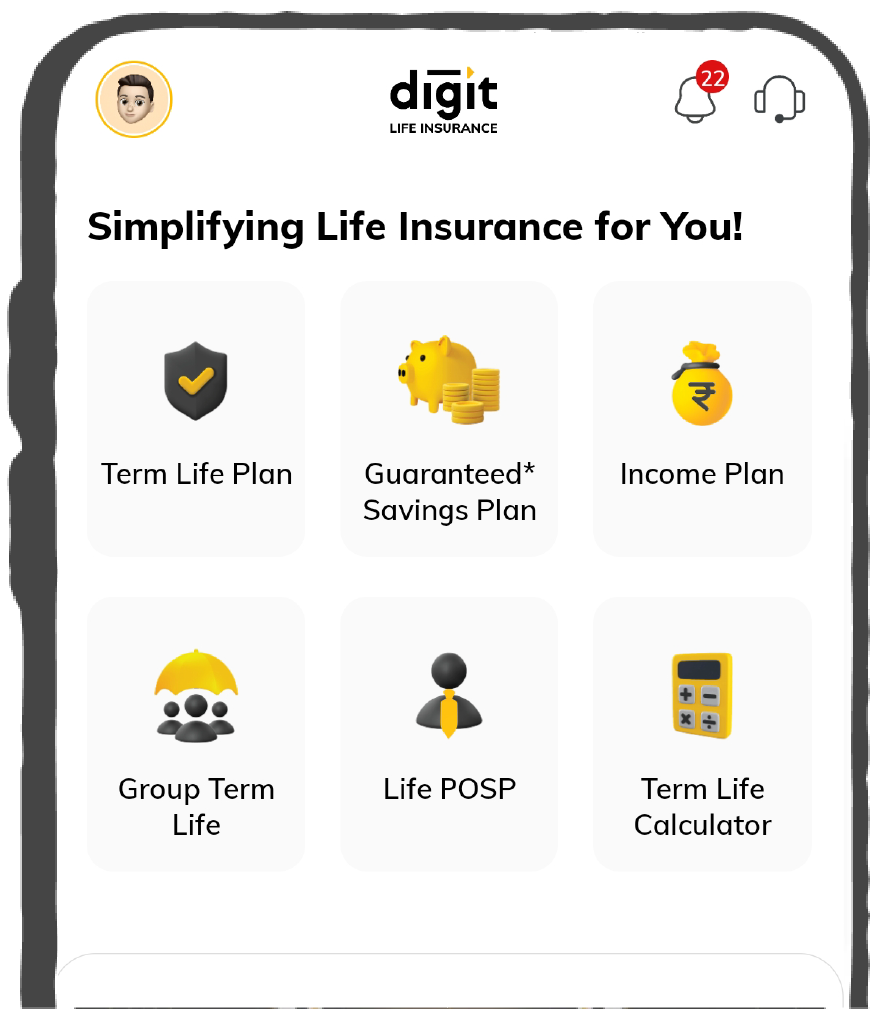Simplifying Life Insurance in India
Difference Between Consumer Price Index (CPI) and Wholesale Price Index (WPI)
Measuring inflation is crucial for understanding the health of the economy. Two important indexes used for this purpose are the Wholesale Price Index (WPI) and the Consumer Price Index (CPI).
While both indexes offer insights into the price changes of goods and services, they focus on different aspects of the economy and have distinct purposes. This guide provides a detailed explanation of WPI versus CPI.
What is Wholesale Price Index (WPI)?

Wholesale Price Index (WPI) is a measure of the average change in prices received by domestic producers for their output.
WPI is calculated using the Laspeyres formula, taking into account the costs of various commodity groups and their weightage in the economy.
- WPI measures the price changes in the wholesale market.
- It reflects the prices at the producer level.
- WPI captures commodities' prices at different stages of production.
- It is also used to track inflation in the economy.
The Reserve Bank of India uses WPI as an indicator of inflation in the wholesale market. WPI is considered a leading indicator of inflation as it reflects the price movements in the wholesale market before it reaches the consumer market.
Is WPI Weekly or Monthly?
India's Wholesale Price Index (WPI) is announced on the 14th of every month (or the next working day), with a two-week time-lapse from the reference month. Before 2012, it was published both weekly and monthly.Who Releases the Wholesale Price Index?
The Department for Promotion of Industry and Internal Trade Office of the Economic Adviser under the Ministry of Commerce & Industry is responsible for compiling and releasing WPI. The index is compiled using data collected from institutional sources and selected manufacturing units throughout the country.What is the Consumer Price Index (CPI)?

Consumer Price Index (CPI) is a measure of the average change in prices of goods and services consumed by households. CPI is calculated based on the consumption expenditure patterns of households, taking into account the prices of goods and services consumed by households in various segments such as rural, urban, and combined.
- CPI measures the price changes in the consumer market.
- It reflects the prices at the retail level.
- CPI captures prices of goods and services consumed by households.
- It is also used to track inflation in the economy.
The Reserve Bank of India uses CPI as an indicator of inflation in the consumer market to determine interest rates and make other monetary policy decisions. CPI is considered a lagging indicator of inflation as it reflects the price movements in the consumer market after reaching the consumer market.
Who Controls CPI?
The National Statistical Office (NSO), erstwhile the Central Statistics Office (CSO), and the Ministry of Statistics and Programme Implementation (MoSPI) release and adjust the CPI.Is CPI Weekly or Monthly?
The Consumer Price Index (CPI) in India is released on a monthly basis on the 12th of every month for the current month and the Final Index for the previous month.What is the Most Common CPI Index?
The three most common CPI indexes are Rural, Urban, and Combined. In India, the most commonly referenced Consumer Price Index (CPI) is the CPI (Combined) or CPI (General), which tracks changes in the prices of a basket of goods and services consumed by households in both urban and rural areas.
This index is widely used to assess inflation and is published monthly by the Ministry of Statistics and Programme Implementation (MOSPI) in India.
What are the Four Principles of CPI?
Four key principles of CPI are a fixed basket of goods and services, weighting of components based on their relative importance in household expenditures, price collection and sampling, and index calculation.Difference Between the Wholesale Price Index and the Consumer Price Index

Does Reserve Bank of India (RBI) Use CPI or WPI?
Why Does India Choose CPI over WPI?
India places significant emphasis on managing inflation to ensure economic stability and the welfare of its citizens.
CPI provides a direct measure of inflation's impact on consumers by focusing on the change in the cost of living at the consumer’s end, making it more relevant for policy formulation aimed at maintaining price stability. Alternatively, WPI focuses on the inflation of the economy as a whole.
What is CPI, SPI, and WPI?
- CPI (Consumer Price Index): Consumer Price Index (CPI) is a measure of the average change in prices of goods and services consumed by households. It reflects the cost of living for consumers and is used to assess inflation from the perspective of the average consumer.
- SPI (Sensitive Price Index): SPI is a measure that assesses the price movement of essential commodities at short intervals (on a weekly basis) to review the country's price situation. It is designed to track price movements of basic necessities like food items, fuel, and utilities, which significantly impact the cost of living for poorer households.
- WPI (Wholesale Price Index): WPI measures changes in the prices of goods at the wholesale level before they reach the retail stage. WPI is important for assessing inflationary pressures at the production level and is often used by policymakers and businesses to monitor trends in input costs and production prices.
How Does RBI Calculate Inflation?
The Reserve Bank of India (RBI) calculates inflation primarily using the Consumer Price Index (CPI). CPI is calculated in India based on a basket of 299 commodities. The Consumer Price Index (CPI) is calculated by taking the average weighted value of each item in the basket and multiplying it by the change in retail prices of goods and services.
The Ministry of Statistics and Programme Implementation (MOSPI) computes the CPI for the entire country as well as for individual states.
CPI = (Cost of the market basket in a given year / Cost of the market basket in the base year) x 100
Inflation is then calculated as the percentage change in the CPI index over a specific period (usually month-on-month or year-on-year). This percentage change indicates the rate of inflation or deflation experienced by consumers.
Distinguishing Features Between the Wholesale Price Index (WPI) and the Consumer Price Index (CPI)
1. Purpose
- Economists and analysts use WPI to make policy decisions.
- The RBI uses WPI to determine the interest rate.
- The government uses CPI to adjust social security payments, tax brackets and interest rates.
2. Measurement
- WPI captures the prices of commodities at different stages of production.
- CPI captures the prices of goods and services consumed by households.
3. Coverage and Sample Size
- WPI covers limited goods and services traded in the wholesale market.
- CPI covers a wider range of goods and services consumed by households.
4. Indicator of Inflation
- WPI reflects price movements in the wholesale market before reaching the consumer market.
- CPI reflects price movements in the consumer market after reaching it.
5. Weightage
- WPI’s weightage is based on various shares in the wholesale market.
- CPI’s weightage is based on the consumption pattern of households.
6. Components
- WPI includes prices of raw materials, intermediate, and finished goods.
- CPI includes prices of goods and services consumed by households.
7. Base Year
- WPI’s base year is typically updated every 5 years.
- CPI’s base year is typically updated every 10 years.
Hence, with a better understanding of WPI vs CPI, it is apparent that both WPI and CPI aid in measuring inflation and understanding economic health. Furthermore, the government uses these indexes to make decisions regarding subsidies, social security payments, tax brackets, and other government benefits.
However, the calculation, methodology, and coverage of these indexes may vary depending on the country.
FAQs about WPI vs CPI
How does the Reserve Bank of India use WPI and CPI for monetary policy?
What is the impact of WPI and CPI on Government policies?
WPI and CPI play crucial roles in government policies. The government uses data provided by these indexes for various decision-making purposes, including:
- Subsidies
- Social security payments
- Tax brackets
- Fiscal policies
- Allocation of funds
- Adjustment of budget
- Other government benefits
Who calculates and publishes WPI and CPI?
Who determines the repo rate?
Who is responsible for inflation in India?
Is the consumer price index (CPI) the same as inflation?
The Consumer Price Index (CPI) is not the same as inflation but is a key indicator used to measure inflation.
CPI is a specific index used to measure changes in consumer prices, and inflation refers to the broader economic phenomenon of rising prices affecting the overall economy. CPI is a crucial component in assessing inflation, but it's not the only measure used for this purpose.
Which is more important: CPI or WPI?
Both the Consumer Price Index (CPI) and the Wholesale Price Index (WPI) serve different purposes and are important economic indicators, depending on the context and objectives of the analysis.
- CPI includes a range of household goods and services, giving a comprehensive view of how inflation affects consumers' cost of living and purchasing power.
- WPI typically includes prices of goods traded in bulk, such as raw materials, intermediate goods, and commodities. It helps businesses understand cost trends, forecast production costs, and adjust pricing strategies.
- For Consumers and Policymakers, CPI is more important because it directly impacts consumers' purchasing power and standard of living.
- For Businesses and Production, WPI is more important because it reflects input costs and price trends at the wholesale level, influencing production decisions, profit margins, and economic forecasts.
Who publishes WPI?
Can WPI be higher than CPI?
What is the difference between WPI and CPI?
Why did India choose CPI over WPI?
Does RBI use CPI or WPI?
Is CPI calculated monthly?
Is WPI released monthly?
Is high CPI good or bad?
Is CPI always 100?
Why should I consider term insurance even if inflation is high, as shown by CPI or WPI?
Can life insurance help me beat inflation shown by CPI or WPI?
Other Important Articles Related to Inflation and Financial Planning
Important Articles About Financial Planing




















